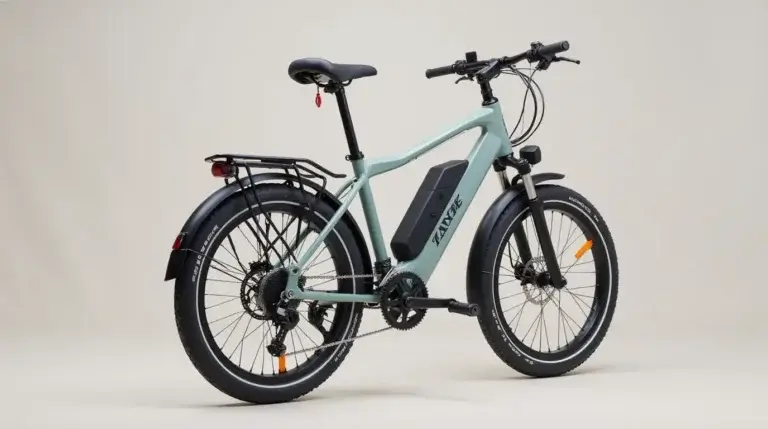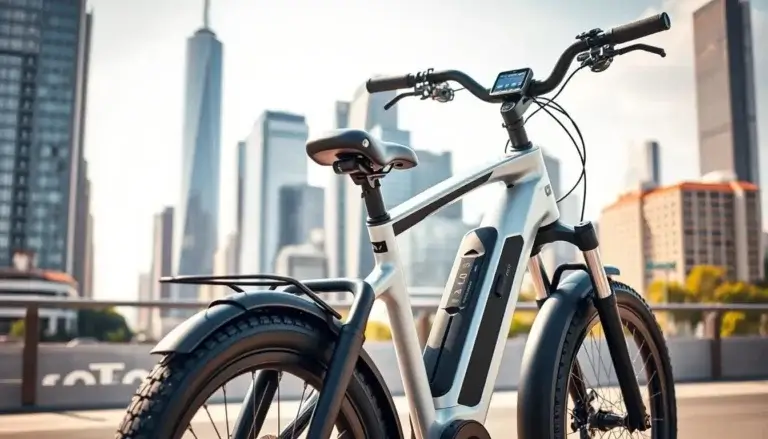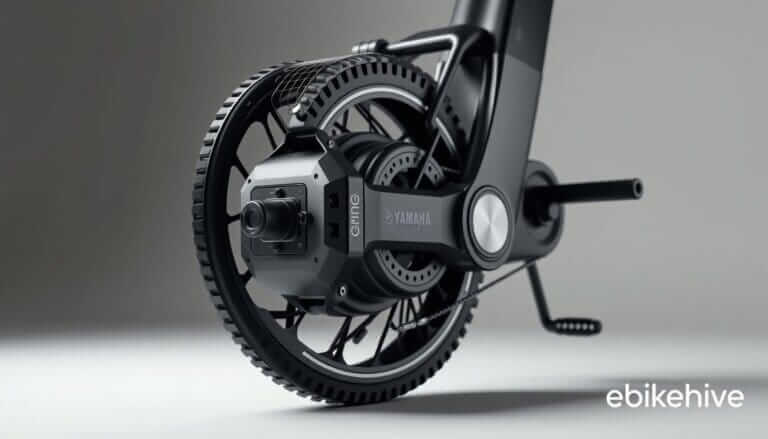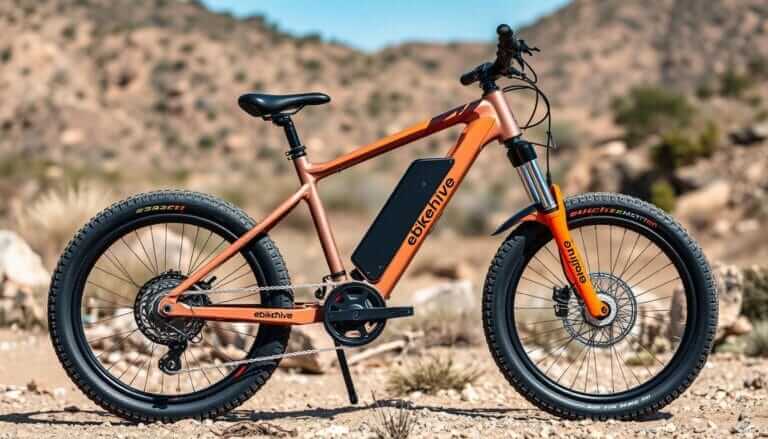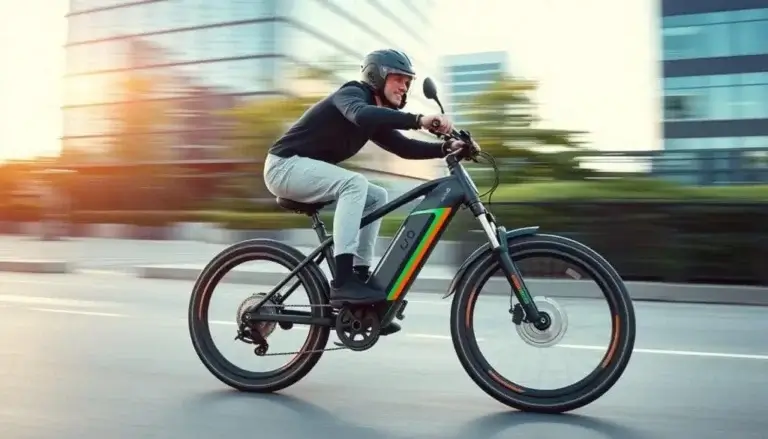fastest ebike or scooter : Which One Wins?
Did you know that while most electric bikes and scooters average around 20 mph, some high-performance models can reach speeds of 40-60 mph? This striking difference in speed is just the beginning when comparing these two popular electric vehicles. Whether you’re a thrill-seeker or a practical commuter, understanding the key differences in speed, design, and performance is essential to making the right choice.
Notable examples like the Delfast electric bike and certain high-performance scooters have redefined what we expect from personal electric vehicles. These models push the boundaries of what’s possible, offering unparalleled speed and power. However, with great speed comes tradeoffs in design, cost, and regulatory considerations.
Table of Contents
In this article, we’ll explore the performance, range, cost, and overall value of the fastest electric bikes and scooters. By the end, you’ll be equipped to decide which vehicle best fits your needs and preferences.
Key Takeaways
- High-performance electric bikes and scooters can reach speeds of 40-60 mph.
- Design differences significantly impact speed and usability.
- Top-speed models often come with higher prices and specific design tradeoffs.
- Regulatory factors play a crucial role in determining vehicle speed limits.
- Comparing performance, range, and cost helps identify the best option for your needs.
Best Fastest eBike: Top 10 High-Speed Electric Bikes in 2025
Introduction to the Fastest Ebike or Scooter: A Mobility Comparison
When considering electric vehicles for personal transportation, two popular options stand out: electric bikes and scooters. Each offers unique advantages, making the choice between them depend on your specific needs and preferences.
Purpose and Scope of the Fastest Ebike or Scooter Comparison
This comparison aims to provide a comprehensive overview of electric bikes and scooters, focusing on their technical specifications and everyday usability. By examining performance metrics, battery technology, and regulatory differences, we help you make an informed decision.
What You Will Learn About the Fastest Ebike or Scooter in This Article
Through this guide, you’ll gain insights into the design, speed, range, and cost of electric bikes and scooters. We’ll explore how real-world testing and user experiences shape their performance and usability in urban settings.
| Feature | Electric Bike | Scooter |
|---|---|---|
| Design | Designed for comfort and versatility, often with pedals for added exercise. | Streamlined for ease of use, typically without pedals. |
| Speed | Varies; high-performance models can reach up to 40-60 mph. | Generally ranges between 15-30 mph, depending on the model. |
| Battery Life | Longer battery life due to larger capacity, suitable for extended rides. | Smaller battery, ideal for shorter commutes and easier to charge. |
| Portability | Heavier and less portable due to the bike frame and motor. | Lightweight and foldable, making it easy to carry and store. |
Whether you prioritize performance or convenience, this article provides a detailed comparison to help you choose the best option for your urban mobility needs.
Overview of the Fastest Ebike or Scooter: Which One Suits You Best?
Electric bikes and scooters are revolutionizing urban transportation, offering efficient and eco-friendly alternatives to traditional vehicles. Both options cater to different needs, making it important to understand their core components and regulatory environments.
Key Components and Characteristics
The heart of any electric vehicle lies in its battery and motor. Electric bikes often feature larger batteries, providing extended range and making them ideal for longer trips. Scooters, while having smaller batteries, excel in portability and ease of charging. Motor design also varies; bikes typically have more powerful motors to handle varying terrain, while scooters focus on efficiency for smooth, urban rides.
Wheel size is another distinguishing factor. Electric bikes usually have larger wheels, enhancing stability and comfort over rough surfaces. Scooters, with their smaller wheels, prioritize maneuverability in tight city spaces, making them perfect for short commutes.
Regulatory and Usage Differences
Regulations play a significant role in how these vehicles are used. In the U.S., electric bikes are classified into categories based on speed and pedal assistance, which affects where they can be ridden. Scooters, while generally allowed in bike lanes, often face stricter regulations in certain areas due to safety concerns and infrastructure challenges.
Understanding these regulatory differences is crucial for riders to ensure compliance and safety. Whether you’re cruising on a bike or zipping through the city on a scooter, knowing the rules helps maximize your experience.
Performance Metrics: Speed and Acceleration of the Fastest Ebike or Scooter
When evaluating electric vehicles, speed and acceleration are critical factors. Understanding how these metrics impact your riding experience is essential, whether you’re commuting or enjoying leisurely rides.
Top Speed Data and Real-World Testing
While many electric bikes and scooters average around 20 mph, high-performance models like the Delfast e-bike can reach speeds of up to 60 mph. Real-world testing reveals that such vehicles excel in both acceleration and sustained speed, making them suitable for various terrains and uses.
| Vehicle Type | Top Speed (mph) | Acceleration (0-30 mph) |
|---|---|---|
| High-Performance E-Bike | Up to 60 | Approx. 3.5 seconds |
| High-End Scooter | Up to 40 | Approx. 4.2 seconds |
| Average E-Bike | 20-30 | Approx. 5-6 seconds |
| Average Scooter | 15-25 | Approx. 6-7 seconds |
Impact of Motor Power and Design on Speed
Motor power significantly influences acceleration and top speed. E-bikes often have more powerful motors, designed for varied terrains, while scooters focus on efficient, smooth urban rides. Design elements like battery size and weight distribution also play crucial roles in performance, with lighter scooters offering quicker acceleration in tight spaces.
Choosing the right vehicle depends on your needs: high-speed adventures or nimble city commutes. Both options offer unique benefits, so consider where and how you’ll ride most often.
Fastest Yamaha Electric Bikes : Power, Speed, and Durability
Battery Technology and Charging Capabilities
Battery technology plays a pivotal role in determining the performance and usability of electric bikes and scooters. Understanding the differences in battery capacity, life, and charging times is crucial for making an informed decision.
Battery Capacity and Life
Electric bikes typically feature larger batteries compared to scooters, offering extended range and durability. On average, an e-bike can cover up to 35 miles on a single charge, while scooters usually manage around 20 miles. This significant difference is due to the design constraints and intended use of each vehicle.
| Vehicle Type | Battery Capacity | Range (miles) | Charging Time (hours) |
|---|---|---|---|
| Electric Bike | Large | Up to 35 | 4-6 |
| Scooter | Small | Up to 20 | 2-4 |
While e-bikes offer longer life and range, their larger size affects portability. Scooters, though less in range, are easier to carry and charge, making them ideal for short commutes.
Charging Time and Range Factors
Charging times vary significantly between high-performance and budget models. High-end e-bikes may require up to 6 hours for a full charge, while scooters often charge in under 4 hours. The tradeoff between quick charging and longer range is a key consideration for commuters.
Advances in battery electric technology are reshaping commuter preferences, offering more efficient and reliable options for urban mobility.
Fastest Ebike or Scooter? Exploring Your Options
Choosing between a high-speed electric scooter and a high-range electric bike can be tricky. Both options offer unique benefits, but your decision should hinge on your lifestyle and commuting needs.
Electric scooters often match the top speeds of e-bikes at a lower price point. However, e-bikes provide extra range, especially with pedal assist, making them ideal for longer commutes. Your daily transportation needs are the key to making the right choice.
| Feature | Electric Bike | Scooter |
|---|---|---|
| Speed | Up to 60 mph | Up to 40 mph |
| Range | Up to 35 miles | Up to 20 miles |
| Price | Generally higher | Often lower |
If you value urban portability and quick commutes, a scooter might be the better option. However, if you need versatility for longer rides, an e-bike is worth considering. Your choice should reflect how you plan to use your vehicle every day.
Range, Versatility, and Commuting Efficiency
Understanding how far you can travel on a single charge is crucial for choosing the right electric vehicle. Both electric bikes and scooters offer distinct range capabilities, making them suitable for different commuting needs.
Comparing Distance Per Charge
Electric bikes generally cover more miles per charge compared to scooters. On average, an electric bike can travel up to 35 miles, while a scooter usually manages around 20 miles. This difference is largely due to the pedal-assist feature in bikes, which extends their range significantly.
| Vehicle Type | Range (Miles) | Battery Capacity |
|---|---|---|
| Electric Bike | Up to 35 | Large |
| Electric Scooter | Up to 20 | Small |
The added versatility of electric bikes makes them ideal for longer commutes, despite their heavier weight. In contrast, scooters are perfect for short trips around the city, where portability and quick charging are more important.
When deciding between these vehicles, consider your daily commute distance. If you need to cover long distances regularly, an electric bike might be the better choice. However, if your trips are short and frequent, a scooter could save you time and money.
Maneuverability, Parking, and Urban Navigation of the Fastest Ebike or Scooter
Navigating through crowded city streets requires more than just speed—it demands agility and practicality. Electric scooters and bikes each offer unique advantages when it comes to maneuvering in tight spaces and finding convenient parking solutions.
Portability and Ease of Handling
Electric scooters shine with their compact, foldable designs, making them incredibly easy to handle in urban environments. Their lightweight frames allow riders to weave through traffic and fit into narrow pathways effortlessly. In contrast, electric bikes, while more stable, are bulkier and less portable, which can be a challenge in crowded areas.
Design Features for City Riding
The design of both vehicles plays a significant role in their urban navigation capabilities. Scooters often feature smaller wheels that enhance maneuverability, while electric bikes have larger wheels that improve stability on uneven roads. The choice between the two largely depends on whether you prioritize nimbleness or comfort.
| Feature | Electric Scooter | Electric Bike |
|---|---|---|
| Wheel Size | Smaller, enhancing maneuverability | Larger, improving stability |
| Portability | Lightweight and foldable | Heavier and less portable |
| Parking | Fits into tight spaces | Requires more space |
For instance, a commuter in a bustling city might find a scooter’s ability to slide into tight parking spots invaluable, saving time and hassle. Meanwhile, a rider on a longer commute might appreciate the stability of an electric bike, even if it means sacrificing some maneuverability.
Ultimately, the decision comes down to your specific needs. If you value the convenience of quick parking and easy handling in dense urban areas, a scooter might be the better choice. However, if your route includes rough terrain or you prefer a more stable ride, an electric bike could be more suitable. Both options offer unique benefits that cater to different urban commuting preferences.
Cost, Maintenance, and Value for Money
When considering electric vehicles, budget is a crucial factor. Electric scooters and bikes vary significantly in price and maintenance needs, affecting their long-term value.
| Feature | Electric Bike | Electric Scooter |
|---|---|---|
| Price Range | $1,500-$3,000+ | $300-$1,000 |
| Maintenance Needs | Higher (more complex design) | Lower (simpler design) |
| Value for Money | Long-term durability and range | Short-term savings and portability |
Electric bikes generally cost more but offer better durability and range. Electric scooters are more affordable but may require more frequent repairs. Consider your budget and how long you plan to use the vehicle to decide which offers better value.
Maintenance needs differ due to design complexity. Bikes have more parts, leading to higher upkeep, while scooters are simpler and cheaper to maintain. Assessing these factors helps determine which option aligns best with your financial situation and usage expectations.
Safety Features and Legal Considerations for the Fastest Ebike or Scooter
When it comes to electric vehicles, safety and legal compliance are paramount. Both electric scooters and bikes come equipped with advanced safety features, but their design differences lead to distinct considerations.
Built-in Safety Technologies
Electric bikes often feature higher-mounted designs, improving visibility and incorporating advanced lighting systems. These elements enhance safety, especially in low-light conditions. On the other hand, electric scooters focus on compact safety features, such as responsive braking systems and stable platforms, which are crucial for navigating tight urban spaces.
Understanding the Legal Framework
Legal frameworks vary significantly by region. Electric bikes are often classified based on speed and pedal assistance, affecting where they can be used. Scooters face different regulations, sometimes restricted in certain areas due to safety concerns. It’s essential to understand these laws to ensure compliant and safe riding practices.
Design plays a key role in safety. For instance, larger wheels on bikes improve stability, while scooters’ smaller wheels enhance maneuverability. Always wear proper safety gear, regardless of your choice, to minimize risks.
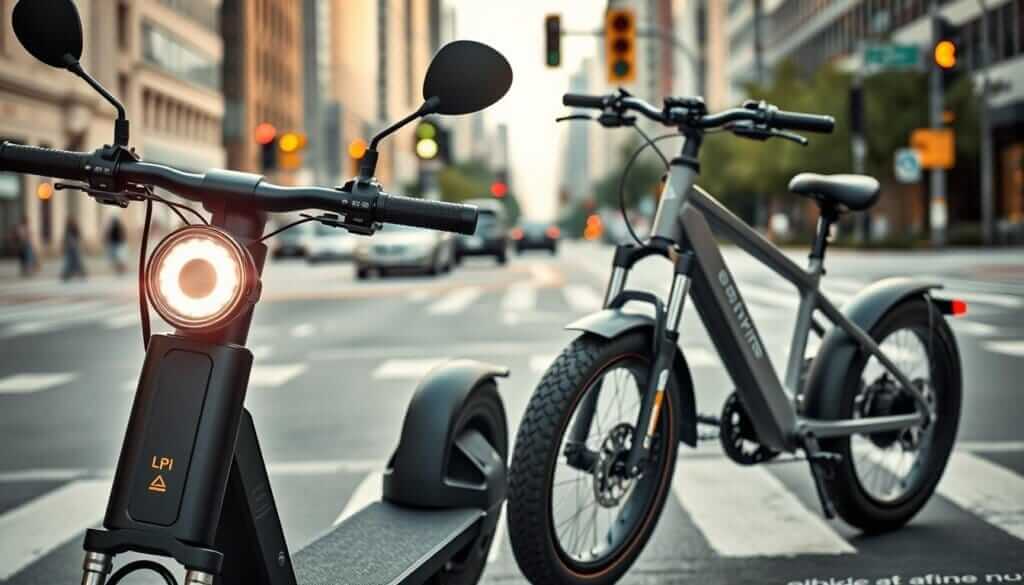
Legal requirements influence where and how you can ride. Make sure to check local laws to maximize your experience and safety.
Fastest Street Legal eBike: Top Picks and Features
Performance, Fun Factor, and Fitness Benefits
Electric vehicles offer more than just transportation—they bring excitement and health benefits. Whether you crave thrilling rides or practical commuting solutions, both electric bikes and scooters deliver unique experiences tailored to your lifestyle.
Thrill of High-Speed Rides vs. Practical Commuting
Electric scooters are known for their exhilarating speed, reaching up to 40 mph, making them perfect for quick, fun rides. In contrast, electric bikes, with their robust motors and longer battery life, are ideal for practical commuting, offering up to 35 miles per charge. While scooters provide instant thrills, e-bikes excel in endurance, making them a great choice for those who need reliability over short bursts of speed.
Opportunities for Physical Activity
Electric bikes stand out for their fitness benefits, allowing you to combine electric power with physical effort. The pedal-assist feature not only extends your battery life but also provides a great workout. Even when the battery runs out, you can continue your journey traditionally. This dual functionality makes e-bikes a superior option for those seeking to improve their health while commuting. On the other hand, scooters, while fun, focus more on convenience and less on physical activity.
In the end, your choice depends on what you value more: the adrenaline rush of high-speed rides or the health benefits of built-in exercise. Both options cater to different lifestyles, ensuring there’s an electric vehicle perfect for everyone.
FAQ
What factors should I consider when choosing between an electric bike and a scooter?
Consider your riding terrain, daily commute distance, and portability needs. Electric bikes are great for longer rides and varied terrain, while scooters excel in urban settings and short trips. Your budget and maintenance preferences also play a role.
Which option offers better top speed for highway riding?
High-performance electric bikes can reach up to 28 mph, while scooters often top out at 18-25 mph. However, always check local regulations, as highway use may require specific certifications and safety gear.
How does battery life compare between electric bikes and scooters?
Electric bikes typically offer a longer range per charge, often covering 40-60 miles, while scooters usually range between 20-40 miles. Battery capacity and efficiency depend on the model and your riding habits.
Are electric bikes easier to maintain than scooters?
Both require regular maintenance, but electric bikes benefit from simpler mechanisms. Scooters may need more frequent wheel and motor checks due to their design and urban use. Plan for annual service costs regardless of your choice.
Can I use these vehicles for commuting in heavy traffic?
Yes, both are excellent for city commuting. Scooters are more maneuverable in tight spaces, while electric bikes provide stability on uneven roads. Choose based on your comfort with balance and control in crowded areas.
How do the prices compare between electric bikes and scooters?
Scooters tend to be more affordable, starting around 0, while electric bikes often begin at 0. Premium models for both can exceed ,000, depending on features like motor power and battery capacity.
Which is better for short trips around the city?
Scooters are ideal for short, urban trips due to their lightweight design and foldability. Electric bikes are more versatile but may be bulkier for quick errands. Consider your storage space and portability needs.
Do I need a license to ride an electric bike or scooter?
Licensing requirements vary by location. Check your local laws, as some areas classify electric bikes differently than scooters. Ensure you understand the legal framework before riding.
Which option is more environmentally friendly?
Both are eco-friendly compared to cars, but electric bikes may have a slight edge due to their efficiency and longer lifespan. Consider the carbon footprint of production and charging sources for a full comparison.
Can I customize or upgrade my vehicle after purchase?
Yes, both electric bikes and scooters can be customized. Popular upgrades include bigger wheels, high-capacity batteries, and accessories like lights or racks. Always follow manufacturer guidelines to avoid voiding your warranty.
Which is safer: an electric bike or a scooter?
Safety depends on how you ride. Electric bikes offer better stability, while scooters require more balance. Always wear protective gear, including a helmet, and stay alert in traffic.
Conclusion
In conclusion, the choice between an electric bicycle and an electric scooter hinges on your specific needs and preferences. Both vehicles offer unique advantages, whether you prioritize speed, range, or portability. Electric bicycles excel in offering extended range and versatility, making them ideal for longer commutes, while electric scooters provide unmatched agility and convenience for short trips.
Key considerations include your budget, daily commute distance, and the type of terrain you’ll encounter. If you value the ability to cover miles without frequent recharging, an electric bicycle might be the better option. Conversely, if you navigate tight city spaces and need something lightweight, a scooter could be more practical.
Ultimately, both electric vehicles provide efficient and eco-friendly alternatives to traditional cars. Assess your lifestyle and commuting requirements to determine which one aligns best with your needs. By considering factors like battery capacity, speed, and design, you’ll find the perfect electric vehicle to enhance your daily rides.


